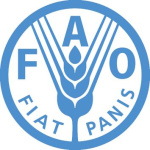- Domeniu: Agriculture
- Number of terms: 87409
- Number of blossaries: 0
- Company Profile:
Established in October 1945 with the objective of eliminating hunger and improving nutrition and standards of living by increasing agricultural productivity, FAO coordinates the efforts of governments and technical agencies in programs for developing agriculture, forestry, fisheries, and land and ...
1. noun: A plant grown in a cold frame, greenhouse, tissue culture or indoors for later planting outdoors.
2. To dig up and move a plant to another location.
Industry:Biotechnology
1. Noun: Unchanged (standard) protocol or treatment for comparison with the experimental treatment. The term is commonly used for untreated organisms.
2. Verb: To direct or regulate cultures with addition of plant growth regulators.
Industry:Biotechnology
1. One of a pair of nucleotide bases that form hydrogen bonds with each other. Adenine (A) pairs with thymine (T) (or with Uracil (U) in RNA), and guanine (G) pairs with cytosine (C).
2. One of a pair of segments or strands of nucleic acid that will hydridize (join by hydrogen bonding) with each other.
Industry:Biotechnology
1. Period of time, during the cell cycle, between M and S phases.
2. A missing section on one of the strands of double-stranded DNA. The DNA will therefore have a single-stranded region.
Industry:Biotechnology
1. Refers to apical meristem-derived growth; the tissues of a young plant.
2. Refers to explant growth during the initial culture period; such as primary callus growth.
Industry:Biotechnology
1. Removal of older stems to promote new growth.
2. Removal of excess fruits to improve the size and quality of the remaining fruits.
3. Removal of seedlings spaced too closely for optimum growth.
Industry:Biotechnology
1. Resulting from or derived from.
2. Term used to identify a variant during meristematic cell division.
Industry:Biotechnology
1. Seed produced by crossing genetically dissimilar parents.
2. In plant breeding, used colloquially for seed produced by specific crosses of carefully selected pure lines, such that the F<sub>1</sub> crop displays hybrid vigour. As the F<sub>1</sub> crop is heterozygous, it does not breed true and so new seed must be purchased each season.
Industry:Biotechnology
1. Selectively-restricted mating competence, which limits fertilization, such as lack of proper functions by otherwise normal pollen grains or certain pistils, a condition that may be caused by a variety of factors.
2. A physiological interaction resulting in graft rejection or failure.
3. A function of a related group of plasmids. Plasmids which are closely related share similar replication functions and this leads to the exclusion of one or the other plasmid if they are present in the same cell; thus such plasmids are incompatible. Plasmids are placed in incompatibility groups by this simple reaction and, in general, plasmids belonging to one incompatibility group (q.v.) are very closely related.
Industry:Biotechnology
1. Separation of solids from liquids by using a porous material that only allows passage of the liquid or of solids of a smaller than the pore size of the filter. The material passing the filter forms the filtrate.
2. Removal of cell aggregates to obtain a filtrate of single cells that can be utilized as plating inocula.
Industry:Biotechnology
